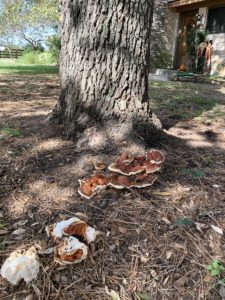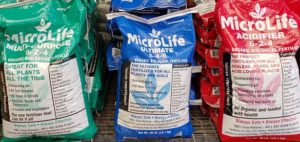The presence of a “fruiting body”, or conk, at the base of a tree or palm is a sign that the tree may be infected by a species of fungus called Ganoderma. There are several species of this fungus that affect different hosts. This one is Ganoderma sessile, and it affects oaks, maples, honeylocusts and other hardwoods.
The conks appear annually in summer and fall at the base of the tree or on a lateral root close to the trunk.


The fungus enters through wounds in the trunk commonly made by lawnmowers or string trimmers. It is thought that Ganoderma may not be an aggressive pathogen on healthy trees but that stressed trees are more prone to infection. Minimizing mechanical wounds and maintaining the health of the tree are the best defense against infection.
The fungus invades the heartwood in the lower trunk first, progressing to the roots and then the sapwood. Once a conk is observed, the tree should be evaluated for safety, as the decayed wood in the lower trunk and roots can lead to blow-down in storms. In fact, if you have seen a tree toppled after a windstorm with the root ball exposed, it is likely that it was infected with the Butt Rot fungus.
The tree may exhibit dead branches, yellowing, wilting, slow growth, and premature fall color if it is infected. Once these symptoms are observed it is likely that the sapwood is infected, and the tree should be removed with the stump and as much of the roots as possible. If the stump cannot be removed, grind it up. This fungus is in the soil and resistant species should be used when re-planting. The fungus may persist up to five years in the soil.
There is no control for this disease, only preventative practices. A mulch ring around a tree in the lawn will prevent mower and string trimmer damage. (Remember to pull mulch back 3” from the trunk so that it is not touching.)

Avoid injuries to the trunk and observe good cultural practices: plant the tree at the correct depth, water where the roots are, fertilize with MicroLife organic fertilizer in the spring and only prune when necessary.

There is another species of Ganaderma fungus that infects palms that is also known as Butt Rot. It can be a destructive pathogen and should not be ignored. As always, if you see a fruiting body on a tree, consult a Certified Arborist for diagnosis.
